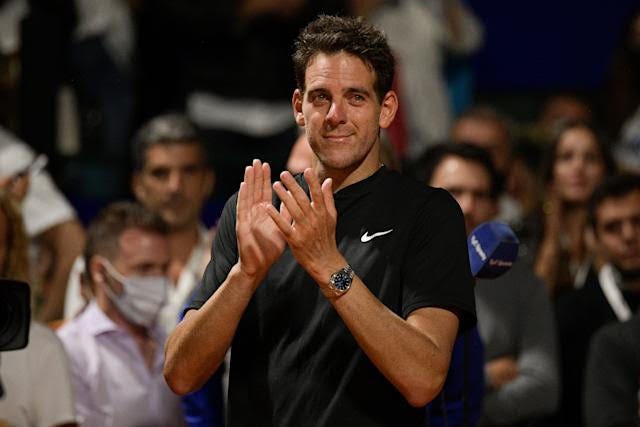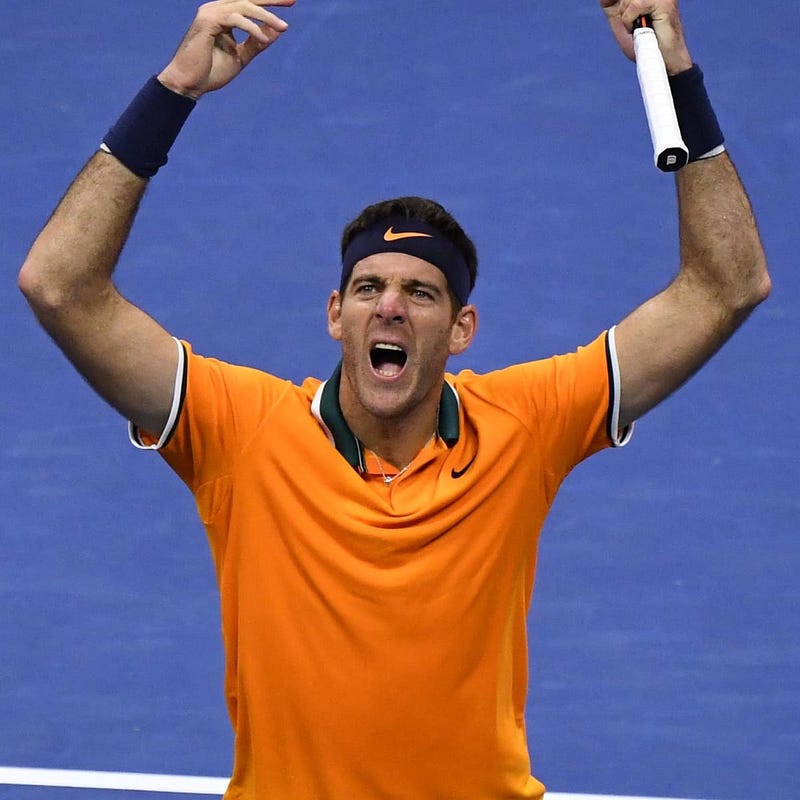
Injuries are an occupational hazard of being a professional athlete. We often hear experts say, “they could have a Hall of Fame career…if they can stay healthy.” For those who end up riddled with injuries, that hypothetical is like the Mount Everest of ifs. Juan Martín del Potro may have had a bigger mountain to climb than anyone.
At the tender age of 20, del Potro won the 2009 U.S. Open. Men’s tennis has been ruled by Roger Federer, Rafael Nadal and Novak Djokovic for almost two decades now, but at that tournament, all three of them were in the semifinals, and none of them won the trophy. This has not happened again at any tournament since, a time frame of 12 and a half years. In handily beating Nadal in the semifinals and then edging out Federer in the final, del Potro looked to have established himself as the next big thing in the men’s game. Federer had won the previous five U.S. Opens, and for all the world looked primed to win a sixth, but del Potro humbled the champion, overpowering him in the second half of the match. Federer looked weary by the end of the final. The sky seemed to be the limit for del Potro’s career.
He would never win another major tournament. Since that iconic U.S. Open victory, del Potro has been wracked with injuries. He has had surgeries on both wrists. Twice, he has injured his knee in the middle of a match. He has had back problems. These injuries have taken him out of the sport for such lengths of time that it’s shocking he continued to play for so long. In achieving a high level in each of his comebacks — he might not have won another major, but he made a semifinal in 2013 and a final in 2018 — he served as an inspiration to similarly unlucky athletes.
Injuries, unfortunately, forced del Potro away from tennis in the end. In late 2019, he fell mid-match and fractured his kneecap. He tried to make a comeback, taking time off to get surgery, but his knee wasn’t having it. The tennis world rejoiced when the popular del Potro announced his comeback last month at his home tournament, the Argentina Open, then wailed as he told the press it was a farewell, not a return.
When del Potro began to play his first-round match, something was clearly wrong. He wasn’t moving properly. He has a dominant forehand, a shot that’s been likened to Thor’s hammer, which he usually takes pains to hit even from uncomfortable positions.

In this match, he couldn’t move quickly enough to control the court with his forehand like he usually does. He lost comfortably to an opponent he would have thrashed in his prime.
Just before the last game of the match, the Buenos Aires crowd showered del Potro with cheers. He has always been a people’s champion. His personality is exceedingly gentle, providing a compelling foil to his forehands that are sometimes clocked at over 100 miles per hour. Every time he got injured, fans and pundits would say a variation of, “why does such a good guy have such bad luck?” This is an overused cliche, but it felt fitting for del Potro.
As the crowd roared, paying tribute to del Potro as he prepared to play the last game of his career, he started to cry. He has never been one to hide his emotions, only adding to his appeal. Many times in the past, when he has blasted a 110 mph forehand past his opponent, his victim gives del Potro a high five or a smile. This is not a typical occurrence in tennis, a sport in which every point counts and players sometimes break their rackets out of anger.
It is hard to be too sad about del Potro’s retirement. He has spoken about simply wanting to sleep without pain. To want him to continue to play tennis — a sport that took his love and largely neglected to return it, beyond fan support — seems barbaric, though the question of what he could have achieved with a healthier body will rightfully ring out for decades. We can only thank him for what he gave us, and curse injuries for what he could not.
















